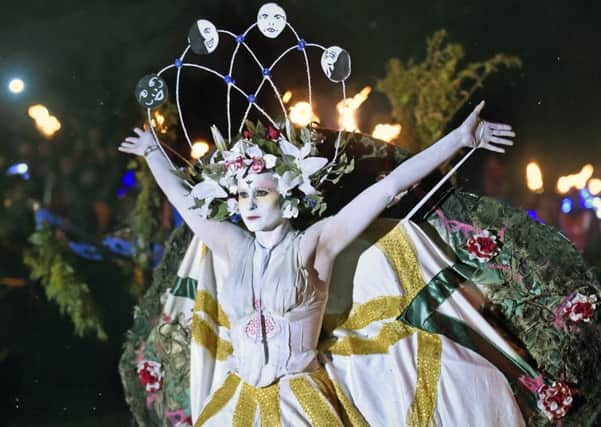Becca Inglis: Beltane's link to our ancient past


The festival is now one of the largest of its kind in the world, having grown enormously from its humble beginnings 30 years ago. It was first performed to a few dozen audience members and founded by a small handful of volunteers, which included Angus Farquhar of the influential industrial band Test Dept, the poet Hamish Henderson, Professor of Scottish Studies at the University of Edinburgh Margaret Bennett, and the physical theatre practitioner Lindsay John.
Together the group pooled their knowledge of Celtic traditions and contemporary culture to create a modern version of the ritual.
Advertisement
Hide AdAdvertisement
Hide AdBeltane had been celebrated across Scotland and Celtic lands since the Iron Age, before the fires started to go out in the 1800s. In Edinburgh it’s said some informal celebrations may have continued beyond that into the first half of the 20th century, with bonfires lit up on Arthur’s Seat (Beltane’s original venue) until wartime blackouts stopped any remaining fires.
But in 1988, Farquhar and the rest of the group saw a need to revive the festival. Margaret Thatcher was beginning her crackdown on gatherings in public spaces, and so Edinburgh’s modern Beltane was conceived in part to promote the importance – and significant historical precedent – of public ritual.
Nowadays the festival is a vivid mix of immersive theatre and spectacle that attracts audiences from all over the world.
A cast of 300 characters decorated in elaborate costumes and body paint engage in fire play, drumming, acrobatics, and Gaelic singing. It takes the form of a procession, starting at the National Monument (known by the Beltane community as ‘the Acropolis’) and moving between different performance spaces on the hill to finish with the lighting of the huge traditional bonfire.
Advertisement
Hide AdAdvertisement
Hide AdThe narrative that the festival tells is partly inspired by the folk culture that informed its origins and also the result of its community’s collective imagination.
Over the decades, hundreds of volunteers have offered their interpretations of the story, which has grown into something like a modern myth. It tells the story of the May Queen, the goddess of summer, and the Green Man, her consort who must go on a personal journey before they can be together. When they are reunited, they light the bonfire as a symbol of summer’s beginning.
At its core, Beltane Fire Festival is a tribute to volunteer-led community arts and togetherness, which are increasingly relevant amid today’s polarising forces. It’s something unique that our city can be proud of.
Becca Inglis is communications coordinator at the Beltane Fure Society
Advertisement
Hide AdAdvertisement
Hide AdBeltane Fire Festival tickets can be bought from Tickets Scotland online at tickets-scotland.com or by phone on 0131 220 3234. They are also available on the gate at the bottom of Calton Hill on Waterloo Place. Visit beltane.org for more information.